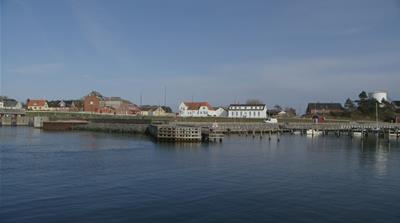
A look at how communities in India and Denmark have adjusted their way of living, turning it into a greener alternative.
Since the industrial revolution, sources of polluting gases have been growing.
Cars, machines, food production, construction etc all contribute to the high concentrations of pollutants in the atmosphere, including carbon and other greenhouse gases which are the biggest drivers of climate change.
Green energy is touted as the future if we want to stop global warming. But pledging a commitment to renewable energy is one thing and doing it is another.
earthrise travels to Denmark and India to find out how locals have adjusted their way of living, turning it into a greener alternative.
Samso: Green energy inspiration
Over the past 20 years, Samso Island’s 4,000 inhabitants have moved from a reliance on fossil fuels to wind, solar and biomass technologies. Today, they get all of their energy from renewable sources.
In 1997, the Danish government organised a contest to create a model community for renewable energy. The Samso islanders came up with a concept – and won the contest.
 |
| The people on the Island of Samso are living a green and profitable lifestyle. [Al Jazeera] |
“The beginning of it was very interesting. It was a top-down decision. We had a very ambitious minister of the environment and he announced that Denmark would cut down 21 percent of the present CO2 emission,” recalls Soren Hermansen, head of the Samso Energy and Environmental Organisation.
“I was the first person that was hired to do this project and I remember the feeling that I was sitting down in the office and I plugged in the telephone and I thought, ‘Gosh, how are we going to do this?'”
The island began a long-term transformation – introducing a combination of wind and solar power as well as geothermal and plant-based energy.
Today, the community boasts a carbon footprint of negative 12 tonnes per person per year. And from wind alone, they produce enough energy for themselves and the usage of 20,000 other homes.
But getting there was not easy.
“People were concerned about the impact of these big installations on this little island. So to convince people that this was good we started thinking about using the old cooperative ownership model where people kind of buy-in – they buy a share, a small share or a bigger share depending on how much money they have – and thereby invite them to participate in ownership so you feel that ‘I’m the part owner of the wind turbine. It’s because of me, it’s there. Not because of some greedy investors who wants to make money out of it’,” says Hermansen.
Samso Island’s success at creating not only a green society but a green economy hasn’t been lost on the rest of the world.
They receive 5,000 energy tourists per year, so they’ve set up an Energy Academy and they are advising other countries.
“I think everybody has some kind of intuition that this is the way to go, this is where we want to be at in the future. [But] a lot of places don’t know how to handle this … [It’s] kind of confirming that this is possible … If they can do it on this little insignificant island, we can do it everywhere,” says Hermansen.
Eco-cremation in India
Cremation is the traditional method of disposing of the deceased in India, but with 8.5m Hindus dying each year, funeral pyres exact a huge environmental toll: felling over 50 million trees, polluting rivers, emitting 8 million tonnes of carbon dioxide into the air, and adding to India’s already critical air pollution problem.
 |
| In India, approximately 4.15 million tonnes of fuelwood are burned every year for cremating dead bodies. [Al Jazeera] |
As early as the 1960s, the Indian government recognised the environmental impact of cremation and they tried to address the problem by introducing alternative methods – without success.
“One of the most important and central ways to think about cremation is to begin to think about the dead person himself or herself participating in the ritual as a sacrifice,” says Dr Ravi Singh, sociologist of funerary rituals.
“Wood generally is very significant. The fire is an aesthetic that is seen with a certain degree of grace. I think that this [the reluctance to adopt alternative ways of cremating] is part of a certain kind of orthopraxy that you do what you have been doing, and this is very difficult to shed in case of death rituals universally,” he explains.
But a team of environmentally-conscious engineers in Delhi have found a way to adapt the age-old tradition of cremation to today’s needs to protect the environment.
Their Mokshda green cremation system is capable of reducing fuelwood consumption by over 60 percent by increasing airflow and heat intensity during the cremation process.
“It works on two principles of science. We have increased the combustion efficiency by providing proper air that is through the chimney hood so that the natural draft of air so when more oxygen is coming in the combustion efficiency increases and increases the heat energy. In this, the cremation process is over in two hours,” explains Anshul Garg, head of the Moksha organisation.
Mokshda’s system has been around for 15 years – a very short amount of time when it comes to taking on a centuries-old tradition. But mourners are only now beginning to seriously consider it.
Source: https://www.aljazeera.com/programmes/earthrise/2018/05/winds-change-eco-cremation-india-green-power-samso-180521053748158.html
Visits: 70




Be the first to comment